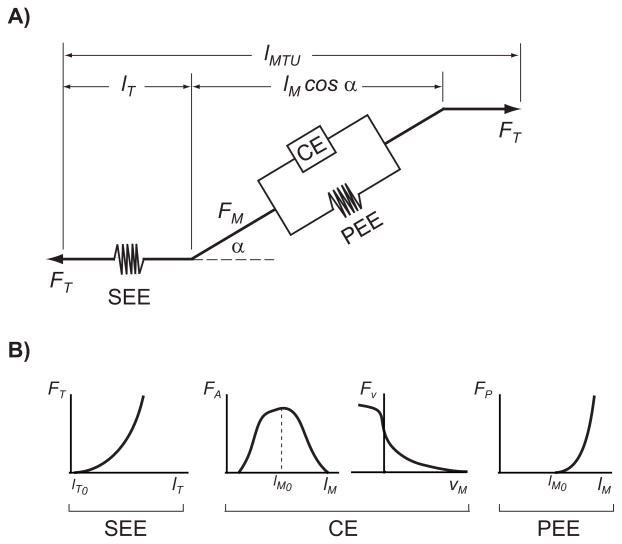Figure 1.
A) Generalized Hill-type muscle model consisting of a contractile element (CE), parallel elastic element (PEE) and series elastic element (SEE) with a pennation angle (α) (Zajac, 1989). B) Muscle force is determined from the active force-length (FA-LM) and force-velocity (FV-VM) relationships in the contractile element and the non-linear spring properties of the passive elastic (FP-LM) and series elastic (FT-LT) elements. The relationships were normalized by the corresponding maximal isometric force, optimal fiber length, maximal shorting velocity, tendon slack length for each muscle.

